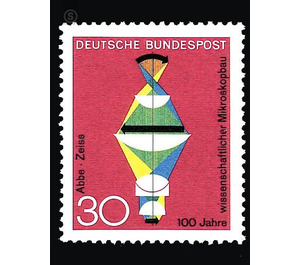Progress in technology and science - Germany / Federal Republic of Germany 1968 - 30 Pfennig
Theme: Post & Philately
| Country | Germany / Federal Republic of Germany |
| Issue Date | 1968 |
| Face Value | 30.00 |
| Color | brown red |
| Perforation | K 14 |
| Printing Type | Multicolor offset printing |
| Stamp Type | Postage stamp |
| Item Type | Stamp |
| Chronological Issue Number | 438 |
| Chronological Chapter | GER-BRD |
| SID | 956008 |
| In 61 Wishlists | |
In August 1964, for the first time, a series of special postage stamps consisting of three different values dedicated to progress in the fields of technology and science was published. This series should be continued without fixed temporal ties, so sporadically, in each case, if there were suitable occasions. Thus, two more values appeared in September 1966. At the beginning of 1968, the time has come to justify further efforts to continue this brand succession. While several artists have been asked to come up with proposals for all brands of this kind, it was imperative in the case of the series that had recently been developed to continue the basic attitude that had been found, because it had proved to be extremely brittle for the theme itself. This form comes from Prof. Karl Oskar Blase, who emerged victorious from the two previous competitions. Therefore, it was natural to transfer the new brands without turning on competition. He had this time for the following technical anniversaries to find a plausible optical formulation. On August 9, 1817, about 150 years ago, Friedrich Koenig, who can be considered the inventor of the first usable printing press, together with Andreas Friedrich Bauer founded the first factory in the world to build such machines. From then on - 15 years before Goethe's death - textbooks, Bibles, newspapers and all sorts of specialist literature could be produced at affordable prices in such high quantities that they became accessible to everyone. The mark of 10 Pf shows on tender-brown ground a printing press, which is traced in the tones orange and green on a simple scheme. On June 7, 1968, the Harz Mining celebrates its 1,000th anniversary; For since the year 968, silver-bearing and gold-bearing zinc-lead-copper ores have been obtained in the Harz on a rich mineral deposit without appreciable interruptions. Even today, the Harz mining industry for the extraction of silver and lead is very important. This special stamp, with which an old, highly respected profession and the mining tradition is thought, is of particular relevance in a time, as many mines are shut down. On the brand value to 20 Pf are on green ground four ore crystals of various shapes in the colors red, blue and black to see. 100 years ago, Professor Ernst Abbe discovered the laws of physics and optics that formed the basis for making microscopes that can no longer be crafted by manual experimentation but by exact mathematical calculations. Abbe, the sole sole owner of the optical workshop of Carl Zeiss, has provided the researcher with an instrument of the highest performance with this intellectual-technical act. On the brand value of 30 Pf the scheme of the beam guidance in the modern microscope is recorded in the colors yellow, blue and black on a red background. The series has been produced by Bundesdruckerei Berlin in the process of multi-color offset printing.


